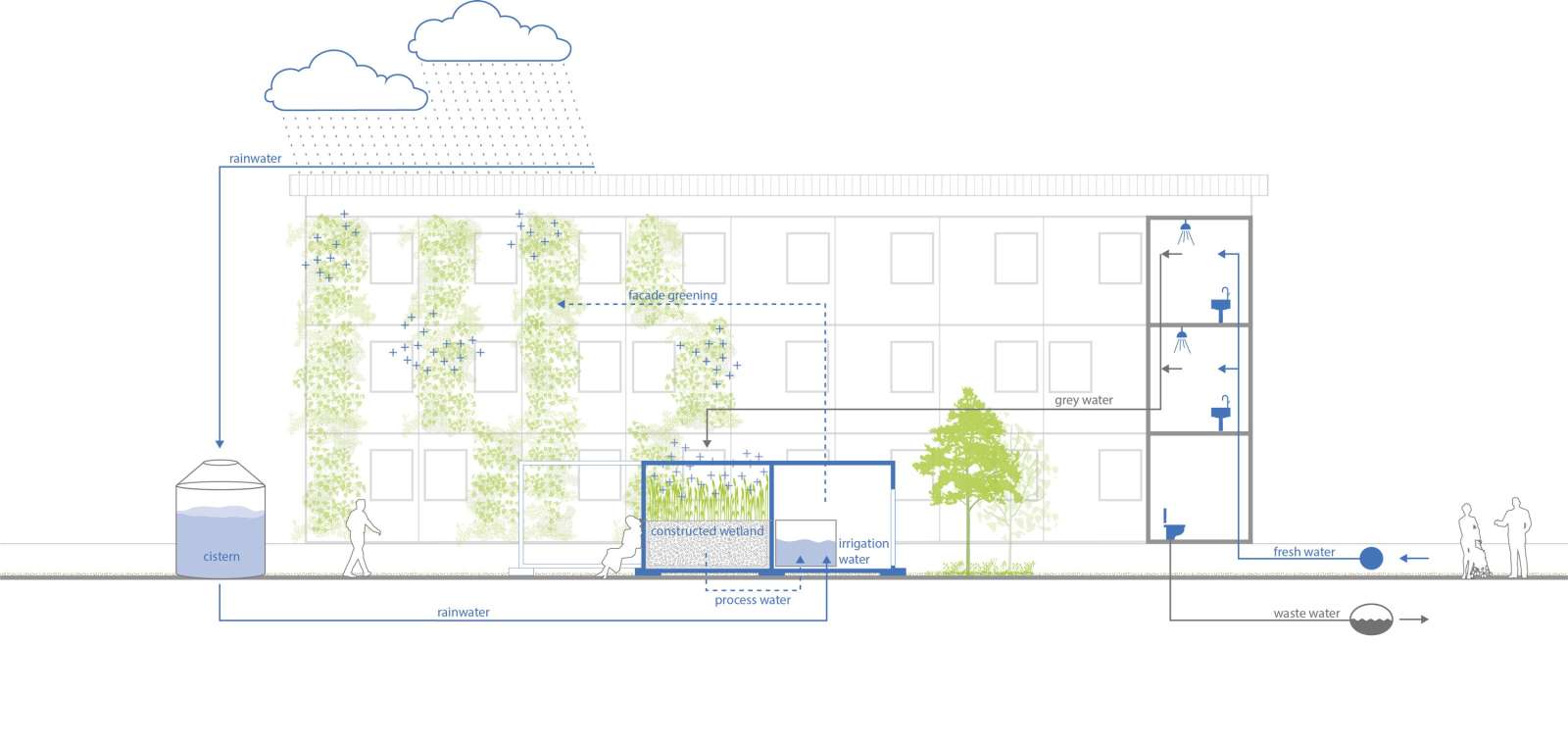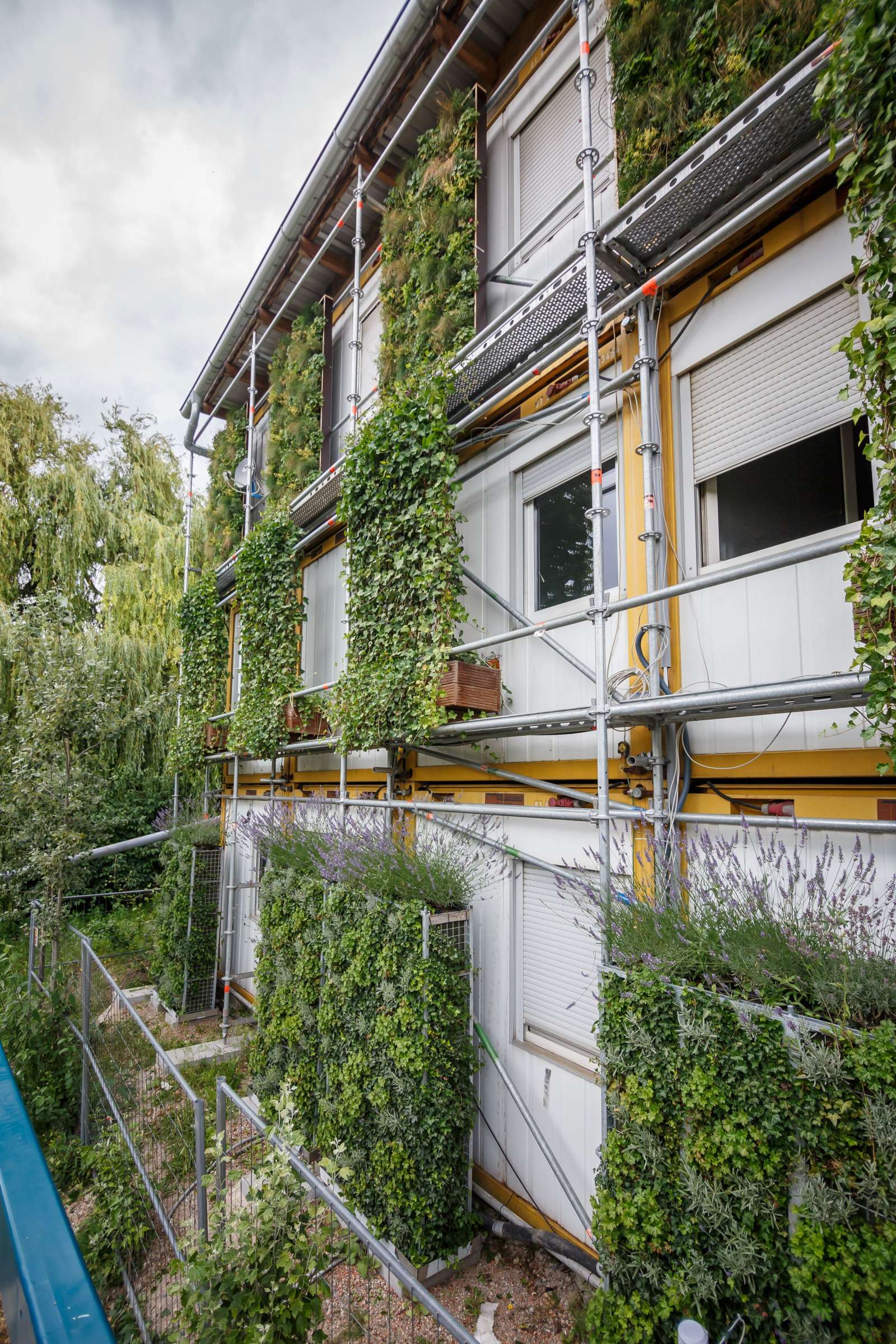The impulse project serves to demonstrate blue-green solutions as a concrete option for the Stuttgart Rosenstein quarter to be developed. Innovative storage and treatment options and green systems integrated into the design of the site show that even in inner-city neighborhoods, measures of integrated blue-green planning can be successful in a confined space. The entire project was developed through a transdisciplinary process to align water availability and demand.
In the direct vicinity of temporary worker housing for the Stuttgart 21 infrastructure project, the graywater produced in the showers and hand-washing sinks is treated by a constructed wetland and used in conjunction with rainwater to irrigate green facades on the housing containers.
The temporary shelters are particularly well suited for greywater use: the installation is easily accessible, and there is little need for complex and expensive interventions in the building structure or for earthworks.
The pilot project is part of the research project Integrated Strategies for Strengthening Urban Blue-Green Infrastructures (INTERESS-I), which is developing concepts and measures for improving settlement and building structures based on urban climate requirements, water availability and quality, and open space concerns.
Project
Impulsprojekt Interess-I
What
Design and construction planning of a pilot project
Where
Stuttgart, GER
When
2018
Impulsprojekt Interess-I
What
Design and construction planning of a pilot project
Where
Stuttgart, GER
When
2018
Design
Daniel Schönle Architektur und Stadtplanung
Concept and coordination
Professur für Green Technologies in Landscape Architecture, TU München
Container
CARU Containers GmbH
Soil filter and grey water
TU Kaiserslautern, Büro Dr. Bruch
Concept rainwater
University of Stuttgart, ISWA
Facade greening
HELIX Pflanzen GmbH
Irrigation control
Dennis Balasus
Cooperation partner
Stadtacker Wagenhallen e.V., Kunstverein Wagenhalle e.V., ARGE Tunnel Cannstatt S21

Treated greywater and stored rainwater are used to irrigate the green facade (Photo: Julian Rettig)
Treated greywater and stored rainwater are used to irrigate the green facade (Photo: Julian Rettig)
Reservoir for rain water storage (l) (Photo: Julian Rettig)
Container with constructed wetland and utility room (r) (Photo: Julian Rettig)
Container with water reservoir and seating steps(Photo: Julian Rettig)
Different greening systems (Photo: Julian Rettig)
Greening system 1 (Photo: Julian Rettig)
Greening system 2 (Photo: Julian Rettig)
Greening system 3 (Photo: Julian Rettig)

Constructed wetland for greywater treatment (Photo: Julian Rettig)
Constructed wetland for greywater treatment (Photo: Julian Rettig)